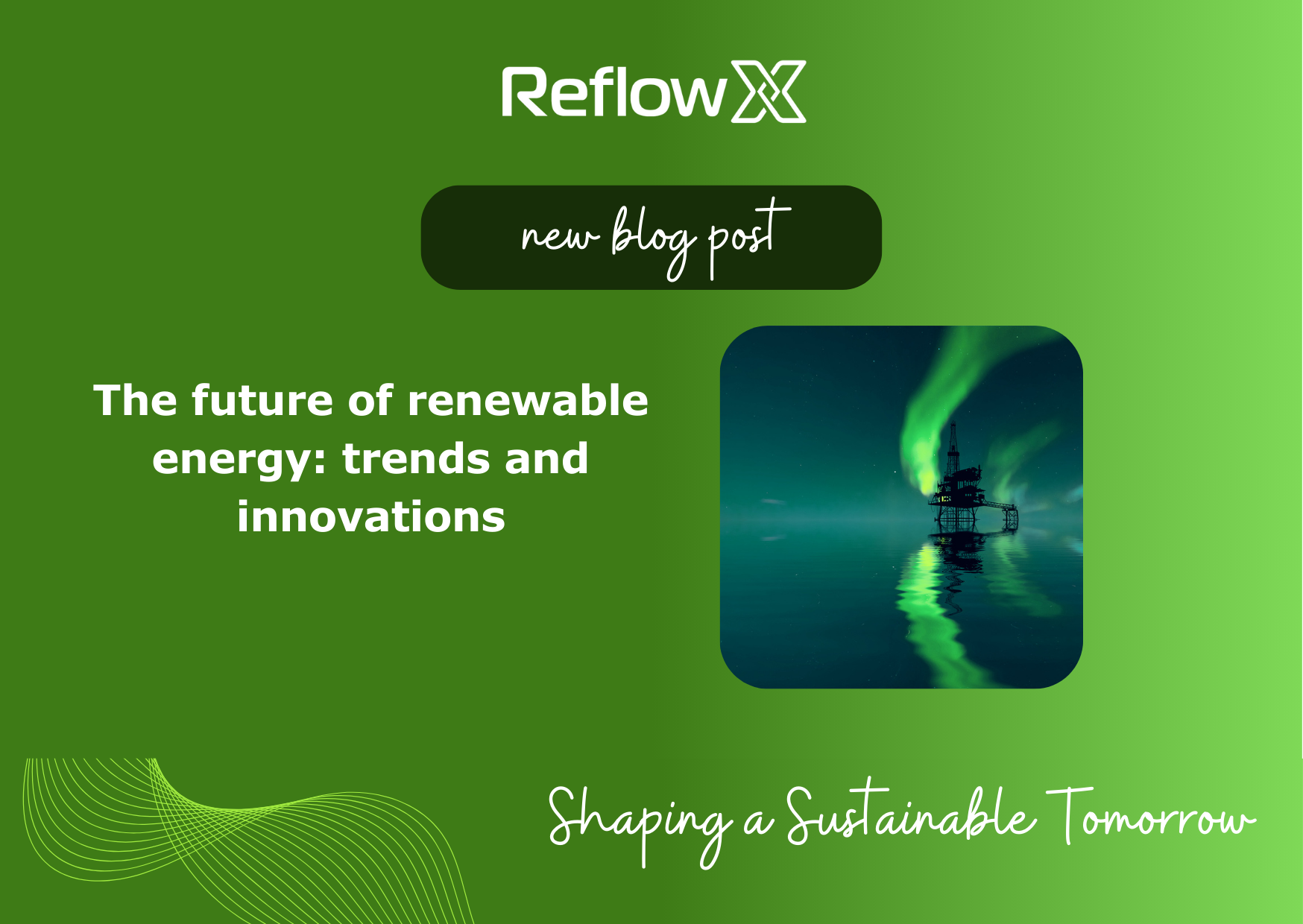
The Future of Renewable Energy: Trends, Innovations, and Outlook
In the face of escalating climate change, the transition to renewable energy has never been more urgent. As nations worldwide commit to reducing carbon emissions and achieving net-zero targets, the renewable energy sector is experiencing unprecedented growth and innovation. This blog explores the current state of renewable energy, emerging trends, groundbreaking innovations, and the future outlook of this vital industry.
Current State of Renewable Energy
Renewable energy sources, including solar, wind, hydro, geothermal, and biomass, are becoming increasingly prevalent. Solar and wind power, in particular, have seen dramatic advancements in technology and cost reductions, making them more accessible and widely adopted. Hydropower remains a significant contributor to the renewable energy mix, while geothermal and biomass energy provide valuable niche solutions.
Recent Advancements
In recent years, the renewable energy sector has achieved remarkable milestones. According to the International Renewable Energy Agency (IRENA), global renewable energy capacity reached approximately 3,064 gigawatts (GW) by the end of 2023. Solar and wind energy have led this surge, with record installations and increased efficiency. For example, solar photovoltaic (PV) costs have plummeted by over 80% in the last decade, making solar power one of the cheapest energy sources available.
Challenges
Despite these achievements, the renewable energy sector faces several challenges. Intermittency—the sporadic nature of solar and wind power—remains a significant hurdle. Reliable energy storage solutions are crucial to address this issue and ensure a consistent power supply. Additionally, upgrading infrastructure and integrating renewables into existing grids require substantial investments.
Emerging Trends in Renewable Energy
1. Increased Efficiency:
One of the most promising trends in renewable energy is the continuous improvement in efficiency. Technological advancements are driving higher energy capture and conversion rates for solar panels, wind turbines, and other renewable technologies. Innovations like bifacial solar panels, which can absorb sunlight from both sides, and larger, more efficient wind turbine blades are pushing the boundaries of what’s possible.
2. Energy Storage Solutions:
Energy storage is critical to overcoming the intermittency of renewable energy sources. Advances in battery technology, particularly lithium-ion and solid-state batteries, are enhancing storage capacity and reducing costs. Additionally, other storage methods, such as pumped hydro and thermal storage, are gaining traction as viable solutions.
3. Microgrids and Decentralized Energy:
The rise of microgrids and decentralized energy systems is revolutionizing energy distribution. Microgrids, which can operate independently or in conjunction with the main grid, provide resilience and reliability, especially in remote or underserved areas. Decentralized energy systems enable local generation and consumption, reducing transmission losses and enhancing energy security.
4. Digitalization and Smart Grids:
The integration of digital technologies, such as the Internet of Things (IoT), artificial intelligence (AI), and machine learning, is transforming the energy sector. Smart grids, equipped with advanced sensors and real-time data analytics, optimize energy distribution and consumption. These technologies enable better demand response, predictive maintenance, and efficient management of renewable energy sources.
Innovations Shaping the Future
1. Green Hydrogen:
Green hydrogen, produced using renewable energy through electrolysis, holds immense potential as a clean fuel for various sectors, including transportation, industry, and power generation. It offers a versatile solution for decarbonizing hard-to-abate industries and can be stored and transported more easily than electricity. As technology advances and costs decrease, green hydrogen is poised to play a pivotal role in the energy transition.
2. Floating Solar Farms:
Floating solar farms, installed on bodies of water such as reservoirs, lakes, and coastal areas, are an innovative approach to expanding solar energy capacity. These installations reduce land use conflicts and benefit from cooler temperatures, which enhance solar panel efficiency. Countries like China, Japan, and the Netherlands are leading the way in deploying floating solar projects.
3. Offshore Wind Farms:
Offshore wind farms, located in coastal and open ocean areas, harness stronger and more consistent winds compared to onshore sites. Advances in turbine technology, including larger and more efficient blades, are driving the growth of offshore wind capacity. Europe, particularly the United Kingdom and Germany, has been at the forefront of offshore wind development, with significant projects also emerging in the United States and Asia.
4. Advanced Bioenergy:
Advanced bioenergy technologies, including next-generation biofuels and biogas production, offer sustainable energy solutions from organic materials. Innovations in feedstock utilization, enzymatic processes, and waste-to-energy systems are enhancing the efficiency and environmental benefits of bioenergy. These technologies can contribute to reducing emissions in sectors such as transportation and agriculture.
Future Outlook
Projections and Predictions:
The future of renewable energy looks promising, with projections indicating continued growth and advancements. According to the International Energy Agency (IEA), renewable energy is expected to account for nearly 95% of the increase in global power capacity through 2026. Solar and wind power will dominate this growth, supported by falling costs and technological innovations.
Impact on Global Energy Markets:
The shift towards renewables is transforming global energy markets. Renewable energy is becoming increasingly competitive with fossil fuels, driving a transition towards cleaner energy sources. This transformation is reshaping energy economics, reducing dependence on imported fuels, and creating new opportunities for economic growth and job creation.
Conclusion
The future of renewable energy is bright, driven by continuous innovation, supportive policies, and growing market demand. As we navigate the challenges and seize the opportunities, renewable energy will play a central role in our quest for sustainability. By embracing these trends and innovations, we can create a cleaner, greener, and more resilient world for future generations.
Blog Link – https://medium.com/@jamie.poole/exploring-the-advantages-and-disadvantages-of-renewable-energy-9b6e44f07857
 Prev Blog
Prev Blog